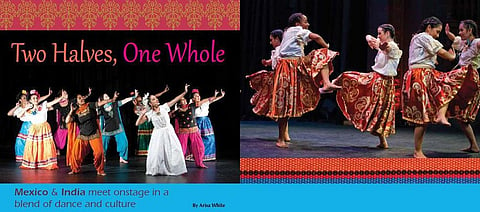
- Home
- न्यूजग्राम
- India
- World
- Politics
- Entertainment
- Culture
- Lifestyle
- Economy
- Sports
- Sp. Coverage
- Misc.
- NewsGram Exclusive
- Jobs / Internships

BY MEGHA SHARMA
The United States had always been an open land to possibilities. It is visited by a huge number of immigrants every year. California which is not only a land of renowned universities, it consists of various fertile farmlands which gave opportunity to numerous Indians who wanted to have a hand in the agricultural field.
It is recorded that through Canada many people from Punjabi communities came here to grow peach and plums. However, restrictive immigration stratagem didn't allow these outsiders to find a wife in their countries. As a result, what came out were interracial marriages of these refugees and the native Mexican women who used to work in the farms.
This gave rise to cultural amalgamation and this intermixing is now at the end of its league as the generations of this sub-culture are reaching the end of their lives. To overcome such a drastic loss a new dance series "Half and Halves" has been organised.
This dance series is a result of pairing up of the "Dance and drum company" (specialising in Bhangra) based in San Francisco and the Ensembles Ballet Folklorico de San Francisco (focussed on the traditional Mexican Dance) to showcase the cultural mix.
The show is a series of dances depicting the cultural ties and also exploring the marriages in the early 20th Century, which created a unique multiplicity of cultural engagements.
The dance is not a regular rehearsal for the traditional Mexicans but inculcate a fusion of the two styles emerging at last as collaborative force.
A record of the dialogues shared with the children of this mixed race is presented in the dances. This traditional fusion is also depicted in the cremation practices. It is registered that "Even though the mothers were Catholic and the fathers were for the most part Sikh, they found a way to merge their traditions while still staying true to their religions. Like the story of a Sikh father who was cremated, and then his ashes laid to rest in the grave next to his wife."
The couples shared eternal love based on joyful intermingling of their professions and a mutual love for dance. While talking of the communication they would share it is said that "Foreign language is an apt metaphor for the show's deeper meaning, because these couples didn't share a native language — they communicated through English."
a Punjabi-Mexican family
The dancers from both the troupes try to learn each other's dance form by learning a certain gesture one day or a different move another. The artistic director of Duniya surprisingly tells of this crucial juncture in the crossing of these cultures as being negotiated for a long time. Herself being an offspring of this race, she considers it to be a significant part in the lives if these Mexican-Indian.
Megha is a student at the University of Delhi. She is pursuing her Masters in English and has also done her studies in German Language. Twitter: @meghash06510344
